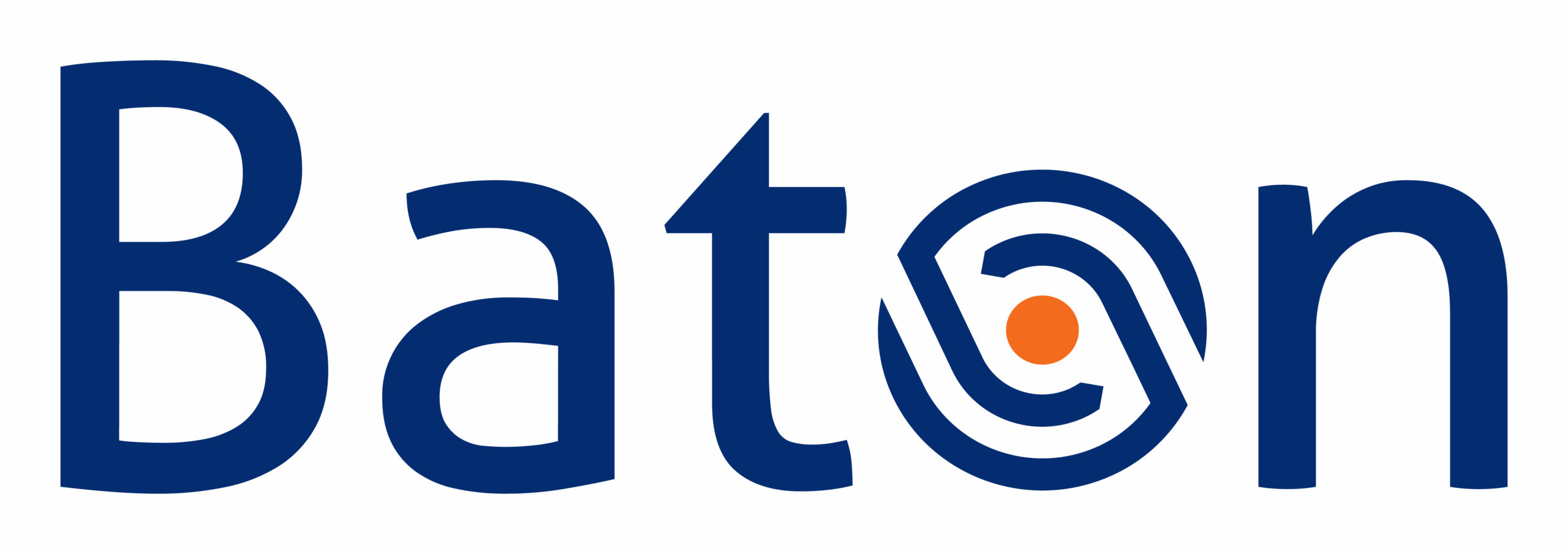Welcome to our fourth discussion focused on innovation in the post-trade space – this time we are looking at interoperability.
At Baton, we’ve spent five years building the next generation of critical market infrastructure. In doing so, we’ve made it our mission to deliver technology that’s resilient, extensible and secure. Central to our design ethos is ensuring that Baton’s solutions are able to seamlessly work with a bank’s existing legacy systems, allowing for fast and efficient connections between systems, whatever the platform and format type.
Interoperability: What is it?
Interoperable systems connect with different platforms using multiple formats
When it comes to the infrastructure used by capital markets firms, one size does not fit all. Individual banks often operate complex and siloed legacy post-trade systems – some have been in place in one form or another for decades, which will be retained. Interoperability is the ability of new systems introduced into the ecosystem to interface seamlessly with those already in place and the emerging technology stacks and access protocols like distributed ledgers and blockchains, ERC-20 etc.
Why is interoperability important?
Individual banks will continue to operate a variety of critical legacy systems and markets are growing in complexity – so in-place, adaptable connectivity is essential
Institutions appreciate that upgrading post-trade environments reduces costs and risk, and delivers efficiencies. However, the core internal processes are often fundamental to commercial policies, covering services such as credit and liquidity management, core payment gateways and security infrastructure. Upgraded post-trade systems must be able to interface smoothly with these existing core systems and processes.
Another factor here is the expanding range of asset classes. Within a few years many banks expect to be processing central bank digital currencies, stable coins, digital security tokens and crypto assets. Interoperability will be critical to allow existing systems to speak to new technologies and processes added to handle these advanced assets.
The alternative to interoperability – to immediately rip and replace existing systems – is disruptive, risky and expensive. And for most firms, it’s simply not an option.
Interoperability and the Baton Core-FX™ platform
At Baton, using interoperable distributed ledger technology (DLT) is central to our solution. Here we will use Core-FX to illustrate these points.
When we started Baton Systems, central to our mission was to solve the fundamental structural problems experienced in managing settlements and payments. We wanted to democratise access to the financial market infrastructure by making it possible to execute real-time, riskless settlements without the burden of pre-funding.
So we thought about technology from first principles. Initially we considered whether blockchain offered a viable solution. Blockchains work well when everything is on the chain but when you have to break from a chain and branch off to interact with existing, parallel systems, blockchain technology can present issues.
We found what we were looking for in distributed ledger technology, deployed via SaaS (software as a service). It provided the framework for cryptographic auditability and non repudiation, along with a framework for interoperating with existing technology stacks and across chain based infrastructures and workflows.
“DLT supports interoperability because the technology allows for the real-time seamless integration with core ledgers, payment gateways and messaging systems”
Baton was founded by software engineers, as a team we were infrastructure focused people with core expertise in data, data pipes, middleware and enterprise integration patterns. Hence, the architecture and design patterns of a distributed ledger was familiar to us. DLT supports interoperability because the technology allows for the real-time seamless integration with core ledgers, payment gateways and messaging systems using secure access protocols, adapters and APIs.
It’s fair to say that the high degree of interoperability we were able to achieve using DLT has become central to our value proposition.
Data: We designed the Baton Systems Core-FX platform as format-neutral
Banks are information businesses – significant resources will always be devoted to owning and processing large data flows. At Baton, part of our offering is to handle a portion of that processing work – to share that load. We do that by seamlessly accessing, normalising and translating that data without disturbing the bank’s internal systems and processes. Our solution uses three modes to receive and publish data:
Push: to client systems using webhooks and secure APIs
Pull: via REST on JSON and XML formats
Streaming: on Kafka and MQ-based messaging in real time
Our platform supports a multiplicity of data formats including ISO 20022, MT / MX / XML / JSON, CSV, TSV, TRML and custom formats.
Scalability: Resource for our data usage is fully automated
In our initial conversations with banks we talked about the importance of designing software that’s able to scale. Clients wanted to publish the data in millions of data points in a single day. We were able to build software to support these volumes easily because our platform uses the most advanced digital technologies to respond to changing bandwidth needs. Our serverless queuing technology – akin to Kafka – lets us scale up and down on single channels. We autoscale, based on peaks, to optimise usage and serverless Lambda code scales up and down according to traffic flows.
“We autoscale, based on peaks, to optimise usage and serverless Lambda code scales up and down according to traffic flows.”
This dynamic scalability lets us avoid the rigidity of scaling up data through expensive hardware. The economics of our configuration works so effectively because it’s founded on proven commodity hardware, significantly reducing the cost from what you might expect from a firm building blockchain-based technology. You could say that we’re leveraging the full power of Cloud computing.
“Dynamic scalability lets us avoid the rigidity of scaling up data through expensive hardware”
Here’s a recent example of how we created workflows to re-format and normalise data when onboarding one of the largest banks. The client uses 10 system integration hooks and multiple data formats.
- It took us just two weeks to create the code for a workflow which would convert and normalise these flows.
- We went straight into unit testing and UAT on the Baton platform.
- From contract execution to one workflow live for settlements was 10 weeks.
- Subsequent flows and integrations took a matter of weeks.
That is a typical timescale for Baton to build the process that handles a client’s custom data.
Workflows: Baton Systems’ Core-FX manages workflows fully-integrated with a bank’s internal processes
The DLT workflow must be integrated with multiple entry points for the bank’s retained core processes, such as credit, liquidity and risk management systems and static data repositories. To deliver this we put in place a series of public and private steps.
The rules embedded in Baton’s Smart Workflows are completely configurable and are similar to those contained in an ISDA contract – in that they set out how the financial institutions manage their bilateral workflows during the lifecycle of a trade like an FX spot or an IRS Swap trade. These are long processes lasting days and sometimes even months. These workflows today exist in the individual silos of a financial institution and work with different copies of the data. At one or more points in the lifecycle of the trade, assets are exchanged between the financial institutions. Since these business workflows are not synchronised across institutions, the processes are slow, expensive and present settlement risks.
“The DLT allows for the parties on the DLT to see the same source of truth in terms of data and collaborate in executing and automating the workflows.”
This is where a distributed ledger, workflows and smart settlements like Baton Systems DLT and Core-FX™ bring efficiencies to markets. The DLT allows for the parties on the DLT to see the same source of truth in terms of data and collaborate in executing and automating the workflows. Settlements are synchronised and settlement risk is eliminated both from a technology and a legal perspective with a rulebook. Baton also allows for workflow rules to be introduced to determine how trades are netted with a given counterparty, or how a trade is settled. At a number of defined points in the workflow the Baton platform may be required to interface to the bank’s other systems to ask questions like: Does this netting set match with the records on your internal systems? Are you ready to make the payments? Can you confirm that this payment will be made?
“All rules are customisable and easily extensible to cover numerous proprietary processes, asset classes and connections.”
With a distributed workflow, such as that used by the Core-FX platform, the system sends and receives messages at a number of points, speaking to both banks then moving onto the next step in seamless operation with both banks’ systems. All rules are customisable and easily extensible to cover numerous proprietary processes, asset classes and connections.
Security: We’ve designed the Baton CORE platform for maximum security with SAML, rules-based access controls and single tenant cloud architecture
We deploy SAML – Security Assertion Markup Language – to integrate with a banks’ systems which allows those systems to manage their identity service. Further, we have role based access control. SAML is how we tie the authentication (identity of the person or system) with the authorisation (entitlements or permissions). This is important, for instance, in the situation when an employee departs the firm. When the bank updates their internal records, because of the interoperability in place, this results in an immediate withdrawal of access to the Baton system for that individual.
Banks can control access to the Baton platform by applying rules, for instance ‘administrator’ – staff with full access, down to read-only access for those team members on lower security levels.
We are already planning for the possibility of enhancing security with confidential computing – by deploying Baton Core-FX in a banks’ internal systems – on bare metal. At present, this is not a requirement, but it may soon become necessary as infrastructures and workflows grow in complexity, and third party apps migrate to Baton Core-FX.
I hope I’ve addressed how interoperability is fundamental to how our Baton CORE™ platform delivers value. Please don’t hesitate to reach out with any questions on this or other aspects to me or our pre-sales team by emailing [email protected].

